The next logical step after embracing digital photography is to learn
about the digital darkroom. By all accounts, and I am beginning to believe
this, professional photographers spend more time fiddling with software
than they ever did in a darkroom, but consider the time worth it because
the creative options are numerous.
One technique I am working on is imported from astrophotography, but I
am applying it to landscapes. I do not pretend to understand the math. If
you want to, these developers have an excellent website and an excellent
freeware product called Registax.
It uses a algorithm called wavelets to combine multiple images and
selectively pull out several different kinds of detail. An example is
found below.
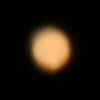
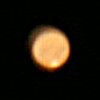 The
left image is the best of the twelve that were stacked together. The right
image is the result. In it the south polar cap is visible as well as two of the
central valleys.
The
left image is the best of the twelve that were stacked together. The right
image is the result. In it the south polar cap is visible as well as two of the
central valleys.
My original work with this programs was to see if I could improve terrestrial
photographs like landscapes and night shots. I told Steve about the
project and he offered to see if he could do as well with a program called
NeatImage. He was right. In night
shots with lots of sensor-induced noise he did nearly as well as I did
with the more elaborate stacking technique. But, when I combined the
steps, whoa, baby! Below is another demo. The small pictures are a small
portion of the original. (Click to see the full-sized picture.)
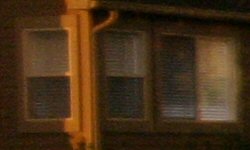 This
is the original shot. Notice the overall grainyness and noise in the
blinds.
This
is the original shot. Notice the overall grainyness and noise in the
blinds.
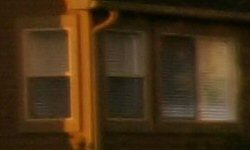 This
is the same shot processed by Neat Image. The major difference is visible
on the bright corner. There is much less noise, but also less detail with
softer edges.
This
is the same shot processed by Neat Image. The major difference is visible
on the bright corner. There is much less noise, but also less detail with
softer edges.
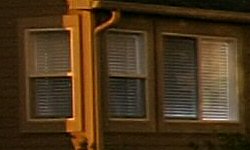 This
is the set of filtered images stacked. All the detail is back and
more. The colors look better as well.
This
is the set of filtered images stacked. All the detail is back and
more. The colors look better as well.
![]()